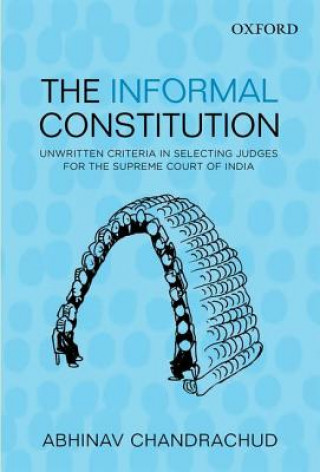
Kód: 02557808
Informal Constitution
Autor Chandrachud, Abhinav (J.S.D Candidate, Stanford Law School, Stanford, California, USA)
Between 1950 and 2009, 189 judges (including 37 Chief Justices) served on the Supreme Court of India, dubbed one of the world's most powerful courts. Not enough is known of who these judges were and the criteria that were used to ... celý popis
- Jazyk:
 Angličtina
Angličtina - Vazba: Pevná
- Počet stran: 336
Nakladatelství: OUP India, 2014
- Více informací o knize

1096 Kč
Dostupnost:
50 % šance Máme informaci, že by titul mohl být dostupný. Na základě vaší objednávky se ho pokusíme do 6 týdnů zajistit.
Máme informaci, že by titul mohl být dostupný. Na základě vaší objednávky se ho pokusíme do 6 týdnů zajistit.Prohledáme celý svět
Mohlo by se vám také líbit
-

Arctic Systems
1665 Kč -

Staat, Stande Und Der Gerechte Preis
1813 Kč
Darujte tuto knihu ještě dnes
- Objednejte knihu a zvolte Zaslat jako dárek.
- Obratem obdržíte darovací poukaz na knihu, který můžete ihned předat obdarovanému.
- Knihu zašleme na adresu obdarovaného, o nic se nestaráte.
Informovat o naskladnění knihy
Zadejte do formuláře e-mailovou adresu a jakmile knihu naskladníme, zašleme vám o tom zprávu. Pohlídáme vše za vás.
Více informací o knize Informal Constitution
Nákupem získáte 110 bodů
 Anotace knihy
Anotace knihy
Between 1950 and 2009, 189 judges (including 37 Chief Justices) served on the Supreme Court of India, dubbed one of the world's most powerful courts. Not enough is known of who these judges were and the criteria that were used to select them for the court, especially of those who served on the court in relatively recent times. Broadly speaking, the Indian constitution formally provides that three types of individuals can be appointed to the Supreme Court: (1) High Court judges of five years' standing, (2) High Court lawyers of ten years' standing, or (3) "distinguished jurists", i.e. law professors or others. However, this says very little, perhaps nothing, about the kind of candidates that are selected for appointment to the court. Informal norms have evolved over a period of sixty years which co-exist alongside formal constitutional rules-norms that govern who will be considered fit and eligible for appointment to the Supreme Court of India. In this study, the author has aimed to quantitatively and qualitatively demonstrate that three informal eligibility criteria in particular are used to select judges for the Supreme Court of India, i.e. criteria that have not been formally specified in any constitutional document: (1) a judge should be of the age of 55 or above at the time he is considered for appointment to the Supreme Court, (2) he should be a senior High Court judge or, especially over the last twenty years, a High Court Chief Justice, (3) judges should reflect the geographic (and demographic) diversity of India, i. e. judges are selected for the Supreme Court by taking into account the state or region they belong to, and whether they belong to non-traditional backgrounds, i.e. in terms of religion, caste, or gender.
 Parametry knihy
Parametry knihy
Zařazení knihy Knihy v angličtině Society & social sciences Politics & government Political structure & processes
1096 Kč
- Plný název: Informal Constitution
- Autor: Chandrachud, Abhinav (J.S.D Candidate, Stanford Law School, Stanford, California, USA)
- Jazyk:
 Angličtina
Angličtina - Vazba: Pevná
- Počet stran: 336
- EAN: 9780198098560
- ISBN: 0198098561
- ID: 02557808
- Nakladatelství: OUP India
- Hmotnost: 470 g
- Rozměry: 151 × 225 × 27 mm
- Datum vydání: 24. April 2014
Oblíbené z jiného soudku
-
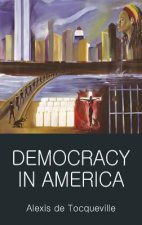
Democracy in America
139 Kč -

The Prince
89 Kč -
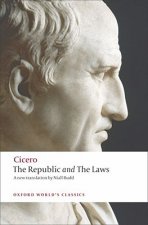
Republic and The Laws
223 Kč -

CONVERSATIONS WITH MYSELF
520 Kč -

Stalin
569 Kč -

Anarchy, State, and Utopia
503 Kč -

Prince
223 Kč -

The Prince
79 Kč -

Weapons of Math Destruction
323 Kč -

Prince
223 Kč -

How the World Works
463 Kč -

Prince
356 Kč -

JFK and the Unspeakable
463 Kč -

The Road to Unfreedom
254 Kč -

Red Notice: How I Become Putins No 1 Enemy
323 Kč -

Twilight of Democracy
302 Kč -

From Dictatorship to Democracy
223 Kč -

Signal and the Noise
476 Kč -

Audacity of Hope
302 Kč -
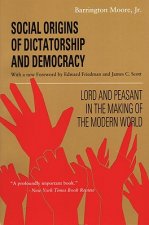
Social Origins of Dictatorship and Democracy
713 Kč -

State in the Third Millennium
1057 Kč -

How to Stand Up to a Dictator
302 Kč -
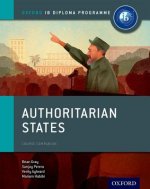
Oxford IB Diploma Programme: Authoritarian States Course Companion
1239 Kč -
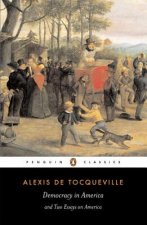
Democracy in America
340 Kč -

Prince
196 Kč -

Theory U: Leading from the Future as It Emerges
1046 Kč -

How Democracy Ends
290 Kč -
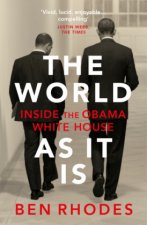
World As It Is
302 Kč -

Democracy Incorporated
597 Kč -
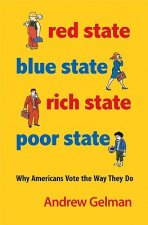
Red State, Blue State, Rich State, Poor State
674 Kč -

Tyranny of Merit
302 Kč -

Utopia
143 Kč -

Stalin, Vol. I
542 Kč -

Concise Oxford Dictionary of Politics and International Relations
383 Kč -

Future of Freedom
495 Kč -
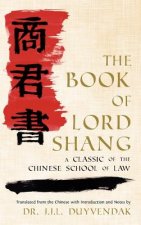
Book of Lord Shang
1001 Kč -

Winter Is Coming
323 Kč -
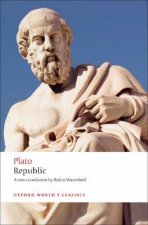
Republic
223 Kč -

Orban
511 Kč -

Likewar: The Weaponization of Social Media
366 Kč -

Obama: An Intimate Portrait
1121 Kč -

Prince
342 Kč -
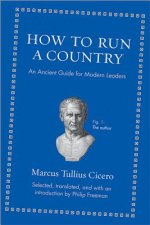
How to Run a Country
364 Kč -

Road to Somewhere
276 Kč -

Hitler
542 Kč -
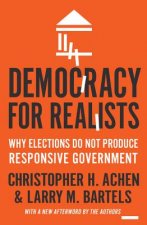
Democracy for Realists
500 Kč -

Mrs. Kennedy and Me
400 Kč -
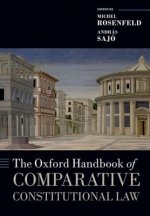
Oxford Handbook of Comparative Constitutional Law
1565 Kč -

Prince
433 Kč
Osobní odběr Praha, Brno a 12903 dalších
Copyright ©2008-24 nejlevnejsi-knihy.cz Všechna práva vyhrazenaSoukromíCookies


 Vrácení do měsíce
Vrácení do měsíce 571 999 099 (8-15.30h)
571 999 099 (8-15.30h)